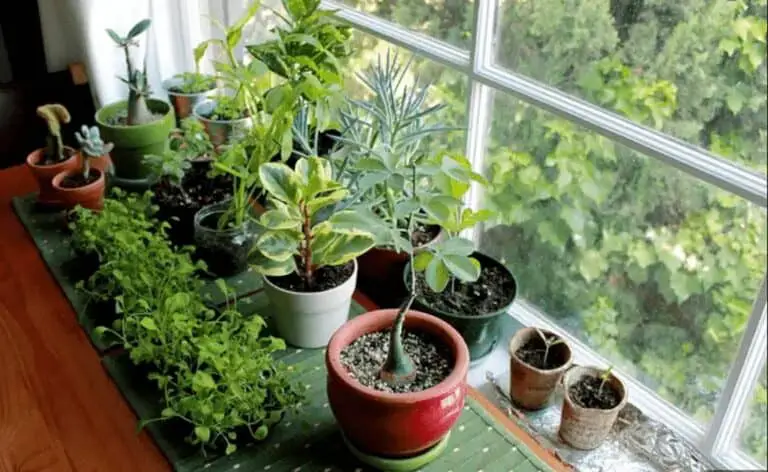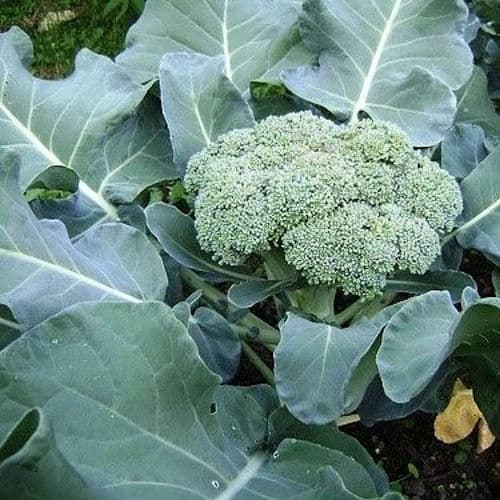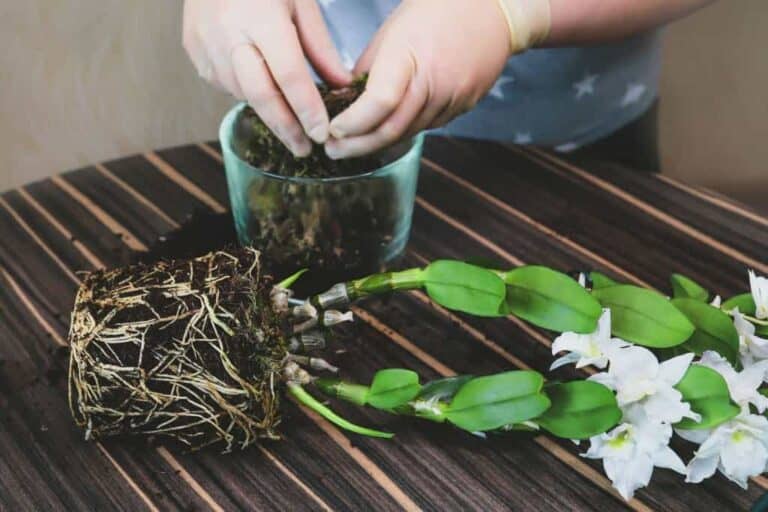Can You Harvest Broccoli More Than Once? Do Broccoli Grow Back?
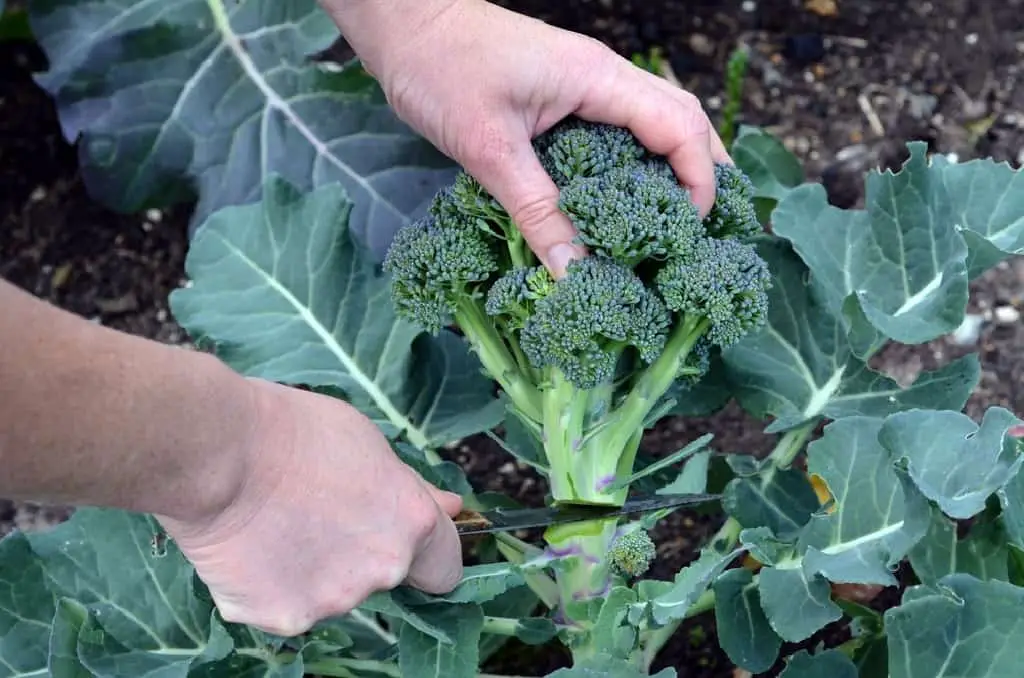
Welcome to the fascinating world of broccoli cultivation! If you’re an avid gardener or simply love incorporating fresh, nutritious vegetables into your meals, you may have wondered about the potential of harvesting broccoli more than once. After all, who wouldn’t want to enjoy the bountiful yields of this vibrant green vegetable for an extended period?
In this article, we’ll delve into the intriguing questions: Can you harvest broccoli more than once? Do broccoli plants have the remarkable ability to grow back? Prepare to uncover the secrets that lie within the realm of broccoli cultivation and learn how to make the most of your broccoli plants.
We’ll explore the lifecycle of broccoli plants, understand the art of harvesting the main broccoli heads, and delve into the exciting world of secondary shoots. Discover the techniques to extend the harvest season and indulge in the crisp, flavorful goodness of this beloved vegetable. So let’s embark on this green journey and unveil the mysteries of harvesting and regrowth in the captivating world of broccoli.
Understanding Broccoli Plants
To understand whether broccoli can be harvested more than once, it’s essential to know a few key facts about broccoli plants. Broccoli, scientifically known as Brassica oleracea var. italica, is a member of the cabbage family and belongs to the cruciferous vegetable group. It is a cool-season crop that thrives in moderate temperatures between 60-70°F (15-21°C).
Broccoli plants are biennial, meaning they have a two-year life cycle. However, for the purpose of vegetable production, they are typically treated as annuals, which means they are grown and harvested within a single growing season. This is because the primary focus is on the development and consumption of the edible flower heads of broccoli, also known as florets.
The Life Cycle of Broccoli Plants
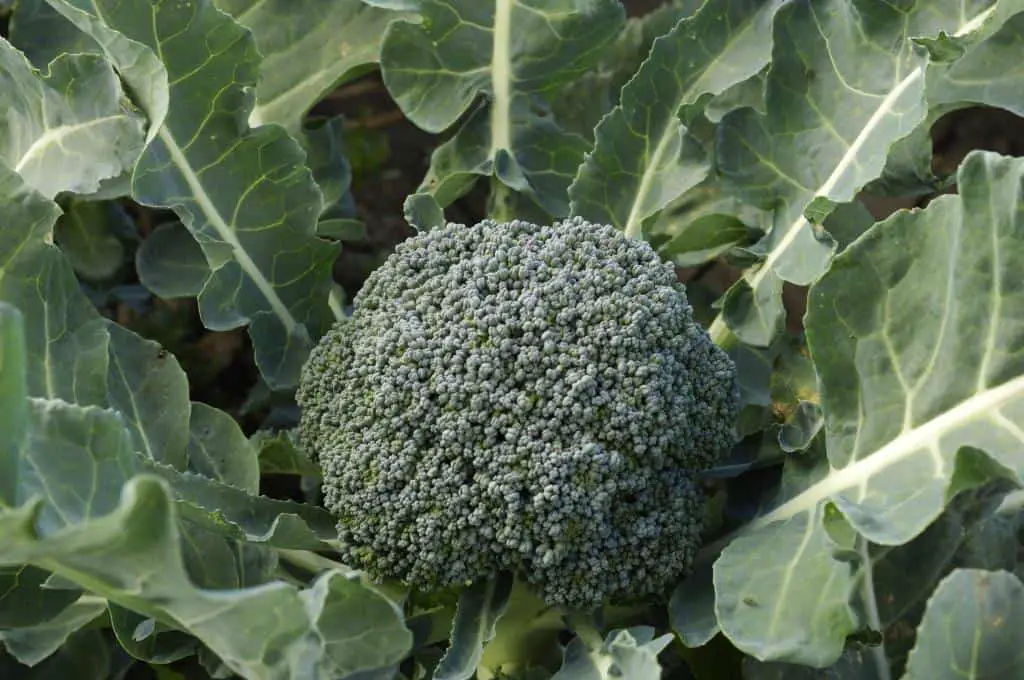
Understanding the life cycle of broccoli plants is key to optimizing harvests. Broccoli plants go through several distinct growth stages, each influenced by various factors. These stages include:
- Seedling Stage: This initial stage begins with the germination of broccoli seeds. Adequate moisture, temperature, and light are crucial for healthy seedling development.
- Vegetative Stage: During this phase, the broccoli plant focuses on leaf and stem growth. It builds a strong foundation for future development, requiring proper nutrition and favorable environmental conditions.
- Head Formation: As the broccoli plant continues to grow, a central head begins to form. This is the stage most people anticipate, as it signifies the imminent harvest.
- Secondary Head Formation: After the main head is harvested, under specific conditions, some broccoli plants have the potential to produce secondary heads. This regrowth phenomenon is what allows for multiple harvests.
Harvesting Broccoli: Best Practices
To ensure the highest quality and yield, it’s important to follow proper harvesting practices. Here are some key guidelines:
- Optimal Harvest Time: Harvest broccoli heads when they are firm, compact, and reach their desired size. Waiting too long can result in over-mature heads with a bitter taste.
- Cutting Techniques: Use a sharp, clean knife or garden shears to cut the main head of broccoli about 5-6 inches below the head. Make a slanted cut to prevent water accumulation on the cut surface, which can lead to rot.
- Post-Harvest Care: After harvesting the main head, it’s crucial to nurture the remaining plant. Water the plant regularly, provide adequate sunlight, and ensure proper nutrient replenishment through fertilization.
- Proper Storage: Store harvested broccoli heads in a cool environment, ideally in a refrigerator, to maintain freshness and extend shelf life.
Can You Harvest Broccoli More Than Once?
The exciting answer is yes; you can potentially harvest broccoli more than once! Some broccoli plants have the ability to produce secondary heads after the initial harvest. However, there are factors to consider and techniques to employ to increase the likelihood of regrowth.
Factors Influencing Regrowth Potential
Several factors affect the potential for regrowth in broccoli plants:
- Variety Selection: Certain broccoli varieties are more prone to regrowth than others. When planning for multiple harvests, choose varieties known for their regrowth capabilities.
- Growing Conditions: Providing optimal growing conditions, including sufficient sunlight, appropriate temperature, and nutrient-rich soil, enhances the chances of regrowth.
Encouraging Secondary Head Growth
To encourage the growth of secondary heads, follow these guidelines:
- Cutting Technique: When harvesting the main head, make a clean cut, leaving a reasonable amount of stem intact. This ensures that the plant has enough resources to support regrowth.
- Plant Care: Continue to care for the remaining plant by providing proper watering, fertilization, and sunlight. Healthy plants have a greater chance of producing secondary heads.
Limitations and Considerations
While the potential for multiple harvests is exciting, it’s important to note some limitations and considerations:
Limitations and Considerations:
- Timeframe: The regrowth process takes time, and the duration may vary depending on environmental conditions and the specific broccoli variety. Patience is key when expecting secondary heads to develop.
- Plant Health: Broccoli plants need to be in good health to support regrowth. Factors such as disease, pest infestation, or inadequate nutrition can hinder the plant’s ability to produce secondary heads.
- Seasonal Constraints: Broccoli is a cool-season crop, and its regrowth potential may be limited in regions with hot summers or extremely cold winters. Consider your local climate and growing season when expecting multiple harvests.
- Plant Age: The regrowth potential of broccoli decreases with plant age. Younger plants tend to have a higher chance of producing secondary heads compared to older, more mature plants.
Regrowth Potential of Broccoli
Can Broccoli Grow Back After Harvesting?
One of the fascinating aspects of growing broccoli is its regrowth potential after harvesting. While the main head of broccoli is typically harvested, the plant itself has the ability to produce secondary heads or side shoots, allowing for multiple harvests from a single plant. So, the answer is a resounding yes—broccoli can indeed grow back after the initial harvest, granting you a continuous supply of this nutritious vegetable.
Factors Affecting Broccoli Regrowth
Several factors come into play when determining the regrowth potential of broccoli. These include climate and growing conditions, the specific broccoli varieties and hybrids chosen, as well as the care and maintenance practices employed.
Climate and Growing Conditions
Broccoli thrives in cooler temperatures, typically between 60 and 70 degrees Fahrenheit (15 and 21 degrees Celsius). However, it’s important to note that extreme heat or frost can hinder regrowth. Ideally, broccoli prefers a temperate climate with mild summers and adequate moisture to support its regrowth process. Providing the right conditions, such as a well-draining soil enriched with organic matter and ample sunlight, can greatly enhance the chances of successful regrowth.
Broccoli Varieties and Hybrids
The choice of broccoli varieties and hybrids also plays a role in regrowth potential. Some varieties are specifically bred for their ability to produce abundant side shoots, while others may focus more on producing a larger central head.
When aiming for regrowth, it’s advisable to select varieties known for their prolific side shoot development, such as ‘DeCicco,’ ‘Waltham,’ or ‘Belstar.‘ These varieties have been favored by gardeners for their reliable regrowth capabilities.
Care and Maintenance Practices
Proper care and maintenance practices greatly influence the regrowth potential of broccoli. To encourage successful regrowth, it’s essential to provide consistent moisture, ensuring that the soil remains evenly moist without becoming waterlogged. Regularly mulching around the plants helps conserve moisture, suppress weeds, and maintain stable soil temperatures.
Additionally, feeding the broccoli plants with a balanced fertilizer, rich in nitrogen, phosphorus, and potassium, promotes healthy regrowth. Regular monitoring for pests and diseases is crucial, as addressing any issues promptly will prevent them from hampering the regrowth process.
To optimize regrowth, it is recommended to remove the main central head by cutting it just above the lower leaves. This encourages the plant to direct its energy toward producing secondary heads or side shoots, which will form in the leaf axils along the main stem. By removing the side shoots when they reach a suitable size, typically around 4 to 6 inches in length, you can enjoy a continuous harvest of tender and flavorful broccoli throughout the growing season.
Remember, patience is key when waiting for regrowth to occur. Depending on the variety and growing conditions, it may take several weeks for the side shoots to develop and reach maturity. But rest assured, with the right care and attention, you can savor the delightful experience of harvesting fresh, regrow broccoli from your own garden.
Read: Regrow Broccoli in Water: Regeneration Broccoli Without Soil
Regrowing Broccoli from the Stalk
Apart from harvesting secondary heads, another intriguing way to extend your broccoli harvest is by regrowing it from the stalk. Here’s how you can do it:
- Harvesting the Main Head: Begin by harvesting the main head following the best practices mentioned earlier. Leave the remaining stem intact, around 5-6 inches above the ground.
- Providing Ideal Conditions: Ensure that the regrowth stalk receives ample sunlight, regular watering, and nutrient-rich soil. Maintain a consistent watering schedule to keep the soil moist but not waterlogged.
- Timeframe for Regrowth: After the main head is harvested, it may take several weeks for new side shoots to emerge from the stalk. Be patient and continue caring for the plant.
- Harvesting Secondary Shoots: Once the secondary shoots reach a suitable size, harvest them using clean cutting techniques. These shoots are edible and can be used in various culinary preparations.
While regrowing broccoli from the stalk can be a rewarding experience, it’s important to note that the regrowth potential diminishes over time. For the best results, it’s advisable to replant new broccoli seedlings for subsequent harvests.
Maximizing Broccoli Yield through Successive Planting
Successive planting, also known as staggered planting, is a technique that allows you to maximize broccoli yield and enjoy continuous harvests throughout the growing season. Here’s how you can implement this method:
- Planting Schedule: Instead of planting all your broccoli seedlings at once, stagger the planting over a few weeks. This ensures that you have a continuous supply of young plants reaching maturity at different times.
- Crop Rotation: To prevent soil nutrient depletion and minimize disease buildup, rotate your broccoli planting areas each season. This practice reduces the risk of pest and disease problems and maintains soil health.
- Pest and Disease Management: Implement effective pest and disease management strategies, such as regular monitoring, cultural practices, and organic pest control methods. This helps protect your successive plantings from common broccoli pests and diseases.
- Harvesting and Planting Cycle: As the first planting reaches maturity and is harvested, replant new seedlings in the vacant spaces. Repeat this cycle throughout the growing season to ensure a continuous supply of fresh broccoli.
By implementing successive planting techniques, you can enjoy a prolonged harvest period and make the most of your broccoli plants.
In conclusion, the answer to whether you can harvest broccoli more than once is a resounding yes! With the right techniques, you can encourage regrowth and enjoy multiple harvests. Whether through harvesting secondary heads, regrowing from the stalk, or employing successive planting, you can extend the joy of growing and enjoying this nutritious vegetable. So get your gardening tools ready and explore the possibilities of harvesting broccoli multiple times!
The Impact of Environmental Factors on Regrowth
Environmental factors play a crucial role in the regrowth of broccoli. Let’s take a closer look at how temperature, light, and soil conditions affect regrowth and how you can optimize these factors to encourage the regrowth process.
Effects of Temperature, Light, and Soil Conditions on Regrowth
| Environmental Factors | Impact on Regrowth |
| Temperature | Broccoli thrives in cooler temperatures, ideally between 60°F and 70°F (15°C and 21°C). Regrowth is favored when temperatures are moderate. |
| Light | Broccoli requires ample sunlight, at least 6 hours of direct sunlight per day, to support regrowth and encourage the development of secondary heads. |
| Soil Conditions | Well-drained soil rich in organic matter is essential for regrowth. Adequate soil fertility, pH levels, and moisture retention are vital for the success of regrowing broccoli. |
How to Optimize Environmental Factors to Encourage Regrowth
To optimize the environmental factors mentioned above and enhance the regrowth potential of broccoli, consider the following strategies:
- Temperature Control: Plant broccoli in the appropriate season or provide shade during hotter months to create a favorable temperature range for regrowth.
- Light Exposure: Ensure that your broccoli plants receive sufficient sunlight by placing them in a location with maximum exposure to direct sunlight. Consider reflective materials to enhance light availability.
- Soil Preparation: Prior to planting, prepare the soil by incorporating organic matter such as compost or well-rotted manure. This improves soil structure, fertility, and moisture retention.
- Mulching: Apply a layer of organic mulch around the base of the broccoli plants to regulate soil temperature, conserve moisture, and inhibit weed growth.
Adapting Regrowth Strategies for Different Climates and Regions
Broccoli regrowth strategies can be adapted to suit different climates and regions. Here are a few considerations to keep in mind:
- Cool Climates: In cooler regions, plant broccoli early in the season to allow for sufficient growth and harvesting before the onset of extreme temperatures.
- Hot Climates: In hotter regions, opt for broccoli varieties specifically bred for heat tolerance and consider providing shade during the hottest part of the day.
- Short Growing Seasons: In areas with shorter growing seasons, focus on optimizing growth conditions during the initial planting to ensure a productive main harvest and consider other techniques such as successive planting for a continuous supply.
- Winter Gardening: Some regions allow for winter gardening, which can provide opportunities for extended broccoli regrowth. Protect plants from frost and provide adequate insulation during cold snaps.
Broccoli Varieties with Regrowth Potential
Certain broccoli varieties are more likely to exhibit regrowth potential than others. Understanding these varieties and their characteristics can help you make informed choices when planning for multiple harvests or regrowth. Let’s explore some regrowth-friendly broccoli varieties:
| Broccoli Variety | Characteristics and Features |
| Variety A | This variety is known for its vigorous regrowth, producing multiple secondary heads after the initial harvest. It thrives in cooler climates. |
| Variety B | A heat-tolerant variety that shows excellent regrowth capabilities even in hotter regions. It has a longer regrowth window and good head formation. |
| Variety C | This variety is well-suited for successive planting, offering a continuous supply of regrown broccoli throughout the growing season. It has a compact growth habit and is resistant to common pests and diseases. |
When selecting broccoli varieties for regrowth, consider factors such as your local climate, available growing season, and specific regrowth goals. Consult with local nurseries or agricultural extension services to identify the best regrowth-friendly varieties suitable for your region.
Common Challenges in Regrowing Broccoli
Regrowing broccoli can come with its own set of challenges. Identifying and addressing these challenges promptly can help ensure successful regrowth. Let’s explore some common issues encountered during the regrowth process and tips for troubleshooting:
- Slow or No Regrowth: If regrowth is slow or nonexistent, evaluate environmental factors such as temperature, light, and soil conditions. Adjust these factors as needed to create a more favorable environment for regrowth.
- Pest Infestations: Monitor your regrowing broccoli plants regularly for signs of pests such as aphids, caterpillars, or cabbage worms. Use organic pest control methods or seek professional advice to manage pest infestations effectively.
- Disease Incidence: Keep an eye out for common broccoli diseases such as powdery mildew or black rot. Practice good sanitation, proper watering techniques, and crop rotation to minimize disease risks.
- Nutrient Deficiencies: Monitor the overall health of regrowing broccoli plants and address any signs of nutrient deficiencies promptly. Adjust soil fertility through appropriate fertilization or amendments based on soil test results.
Remember, every garden and regrowth situation is unique. Troubleshooting challenges may require some experimentation and adaptation based on your specific conditions.
Conclusion
In summary, while broccoli plants are biennial, they are typically treated as annuals in vegetable production. After harvesting the main broccoli head, the plant has the ability to produce secondary shoots or side shoots. These smaller florets can be harvested and enjoyed, prolonging the harvest season. By employing selective harvesting, the “cut and come again” method, and succession planting, you can maximize your broccoli harvest and enjoy a steady supply of this nutritious vegetable.
Remember to provide your broccoli plants with the right growing conditions, including well-drained soil, ample sunlight, regular watering, and appropriate fertilization. Stay vigilant against pests and diseases, and harvest the heads at the right time for maximum flavor and nutrition. With these practices in place, you’ll have a thriving broccoli garden that rewards you with multiple harvests.
So, the answer to the question, “Can you harvest broccoli more than once?” is a resounding yes. Happy gardening and bon appétit!
FAQs
Can I harvest broccoli more than once in a single growing season?
Yes, you can harvest broccoli more than once in a single growing season. After harvesting the main broccoli head, the plant often produces secondary shoots, allowing for additional harvests of smaller florets.
How long does it take for broccoli to grow back after the initial harvest?
After the initial harvest, it typically takes a few weeks for broccoli to grow back. The exact time may vary depending on factors such as weather conditions, soil fertility, and the specific variety of broccoli being grown.
Is regrown broccoli nutritionally comparable to the initial harvest?
Regrown broccoli is generally nutritionally comparable to the initial harvest. While there might be slight variations in nutrient levels, the secondary shoots still retain valuable vitamins, minerals, and antioxidants, making them a nutritious choice.
Can I regrow broccoli from the roots or only from the stalk?
Broccoli can regrow from both the roots and the stalk. Leaving a portion of the stem intact after harvesting the main head encourages the development of side shoots. Alternatively, you can cut the main head just above the lower leaves to stimulate regrowth from the roots.
What are the best environmental conditions for successful regrowth?
For successful regrowth, broccoli plants thrive in moderate temperatures between 60-70°F (15-21°C). They require full sun exposure, well-drained fertile soil with a pH level between 6.0 and 7.5, regular watering to keep the soil moist but not waterlogged, and proper spacing to allow for good air circulation. Providing these conditions will support healthy regrowth of broccoli shoots.


